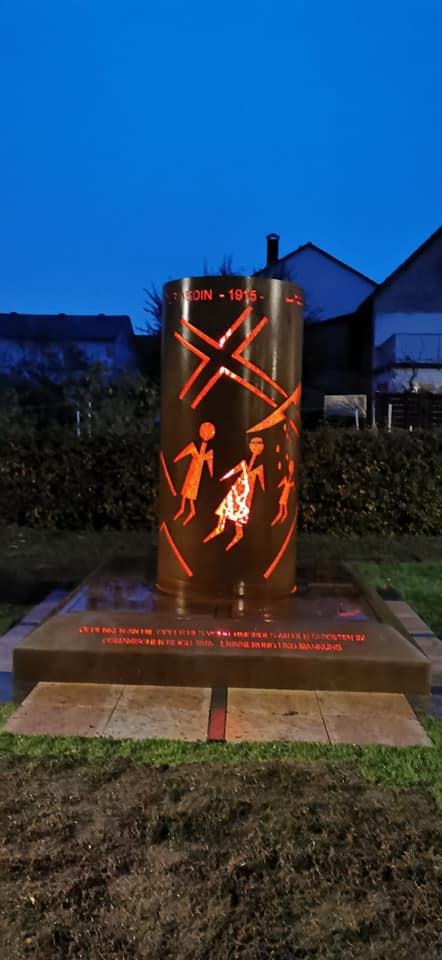By Abdulmesih BarAbraham (AINA) — An article titled The Year of the Sword – The Assyro-Chaldean Genocide under the Ottoman Empire (1915-1918) appeared in the history section of the March-April issue (no. 103) of the French magazine Diplomatie affaires stratégiques et relations internationales. The article was authored by Joseph Yacoub, honorary professor in political science at the Catholic University of Lyon. Prof. Yacoub is an Assyrian (also known as Chaldean and Syriac). He was the first chairholder of UNESCO’s ‘Memory, cultures and interculturality’, …
Category: English
By Terry.Stavridis The document attached provides an excellent and succinct overview of Assyrian history from 1914-1944.[1] There are undoubtedly important themes that emerge in the reading of this document from the National Archives of Australia collection. These are: The Assyrians were driven out from their ancestral lands in the Hakkiari mountains of Eastern Turkey and ended up in the Urmia district of Persia during the First World War. The collapse of Tsarist Russia in 1917 did not assist the Assyrian …
To our dear friends in Arizona and abroad—we did it! Today, March 3rd, 2020 the Arizona House of Representatives in a unanimous vote passed the HCR 2006 Assyrian Genocide: Remembrance Day. This resolution was introduced by Representative Nancy Barto (R) and brought to fruition by The Assyrian Genocide Research Center (Seyfo Center). HCR 2006 Assyrian Genocide: Remembrance Day was also co-sponsored by Representatives Jennifer Jermaine (D) and Frank Carroll (R). SEYFO Center is forever thankful to these amazing representatives for their courage and compassion! …
For too long, Turkey bullied America into silence. Not anymore. By Samantha Power On Tuesday, by a vote of 405 to 11, the House of Representatives defied the Turkish government’s intimidation and, for the first time in 35 years, passed a resolution that recognized the Armenian genocide. In acknowledging the Ottoman Empire’s killing of more than one million Armenians as “genocide,” the House follows more than two dozen countries and 49 of 50 states. This resolution matters hugely to Armenian-Americans. But it …
Pohlheim, Germany (AINA) — An Assyrian genocide monument was unveiled yesterday in Pohlheim, Germany. The monument commemorates the Assyrians who were killed in the Turkish genocide of Assyrians, Greeks, and Armenians between 1915 and 1918. The genocide targeted the Christian subjects of the Ottoman Empire and claimed the lives of 750,000 Assyrians (75%), 1 million Greeks and 1.5 million Armenians. Pohlheim is a town in the district of Gießen, where over 1500 Assyrian families live. There are 180,000 Assyrians living …
The House voted overwhelmingly on Tuesday to formally recognize the Armenian, Assyrian and Greek genocide and denounce it as a matter of American foreign policy, a symbolic vindication for the Armenian, Assyrian and Greek diaspora made possible by a new torrent of bipartisan furor at Turkey. The passage of the legislation, by a 405-to-11 vote. The resolution, which is not legally binding, marked the first time in 35 years that either chamber of Congress considered as genocide the mass killings of …
The Assyrian genocide of 1915 in the Ottoman Empire and the Simele massacre of 1933 have been recognized by the State of California recently. Read the full resolution text here, that has passed on September 9, 2019: bit.ly/2mf2UFR The decision was made unanimously, with both Democratic and Republican assembly members behind the resolution. Assyrian Christians — often simply referred to as Assyrians— are an ethnic minority group whose origins lie in the Assyrian Empire, a major power in the ancient …







